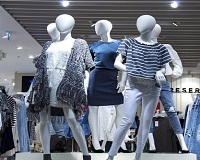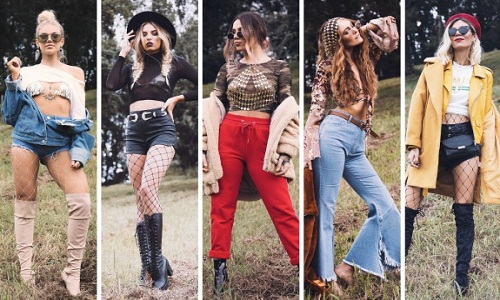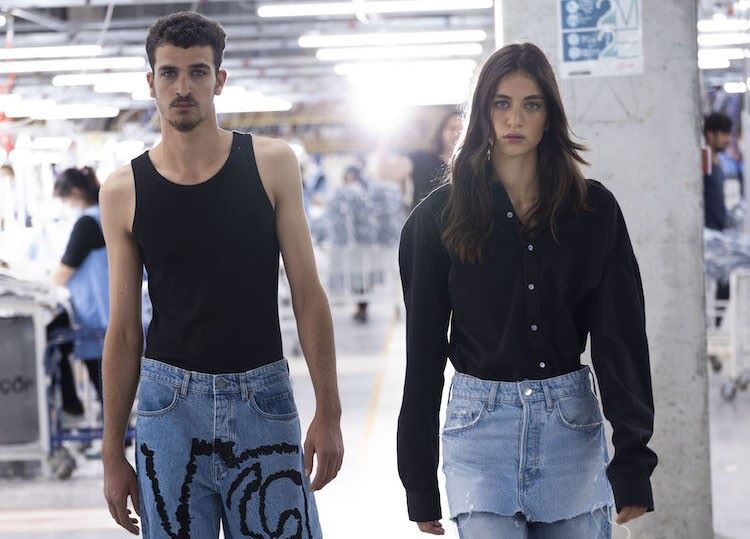"While leading fast fashion and luxury apparel companies are taking initiatives to go green, the impact still seems to be insignificant. Aiming to reshape the industry with circular economy initiative, the Ellen MacArthur Foundation (EMF) has teamed up with some fashion brands to help overhaul the business model. It aims to reverse the hyper-consumption that is currently promoted in fashion—an industry on track to consume a quarter of the global carbon supply by 2050—and to recast the whole clothing supply chain into a system based on balanced consumption and less-intensive production methods."

While leading fast fashion and luxury apparel companies are taking initiatives to go green, the impact still seems to be insignificant. Aiming to reshape the industry with circular economy initiative, the Ellen MacArthur Foundation (EMF) has teamed up with some fashion brands to help overhaul the business model. It aims to reverse the hyper-consumption that is currently promoted in fashion—an industry on track to consume a quarter of the global carbon supply by 2050—and to recast the whole clothing supply chain into a system based on balanced consumption and less-intensive production methods.

The EMF analysis states a ‘circular’ clothing industry would be elegantly balanced: The fashion business model would be reoriented towards reducing consumption and waste at every step, from the cotton field to the storefront window. On the production end, reducing chemical-intensive synthetic fibres would sharply cut pollution. Manufacturers would systematically decrease the pace and intensity of production so that a company’s energy consumption would automatically shrink to fit the reduced resource needs for fewer garments and less overseas exporting. As the carbon footprint downsizes in production, circularity would be encouraged in the retail market as well by designing more durable styles, which could be worn for years, rather than become disposable within a few months. EMF also recommends creating a second shelf life for used clothing by expanding the marketing of resold and rented apparel.
The analysis points out eventually, the value derived from more eco-friendly production and retail would offset the impacts of waste generated by the fashion industry. By stopping or reversing the cycle of environmental degradation, the industry could provide an avenue toward shrinking consumers’ carbon footprints. Industry critics have doubts about the entire landscape and opine that even after assuming that sustainable textile and apparel manufacturing can become less energy-intensive and ‘cleaner’ through improved technology, such material changes would not have major impact.
Being positive about future
Maddy Cobbing from Greenpeace’s Detox My Fashion campaign points out the current rates of excessive production and consumption in the industry as a whole are probably outweighing any gains that are being made on eliminating hazardous chemicals. So comprehensively scaling down production remains the safest way to decrease environmental impacts, and, in the immediate term at least, the industry needs to take a more responsible approach and slow down the flow of materials as the first priority.
Even after surrounding debates, EMF seems to be quite positive about the entire initiative and asserts that a circular economy would be distributive by design, meaning value is circulated among enterprises of all sizes in the industry so that all parts of the value chain can pay workers well and provide them with good working conditions. Experts feel that once that happens, the low-skill factory jobs would be replaced with higher-skill jobs in the ‘green economy’. On this, Greenpeace officials said that better working conditions and opportunities for rewarding work are likely to follow as a result of less exploitation of nature and people. But job loss could be unavoidable, which will require a new type of fashion industry with more balanced workplace governance, and designers cooperating with workers on design and planning. Only if workers are protected from the worst employment impacts of reduced production could they ever really benefit from the environmental dividends of a more environmentally healthy, less toxic system of production.












